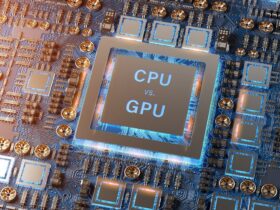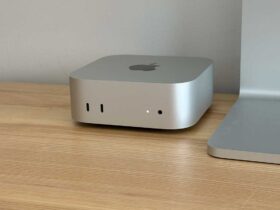Daftar Isi
A reliable power supply unit (PSU) is the unsung hero of any computer system. It quietly provides the necessary energy to keep your components running smoothly. However, like any critical component, PSUs can encounter issues that disrupt your computing experience. In this article, we’ll delve into common power supply issues, their causes, and practical solutions to ensure your PC stays powered up.
The Dreaded Power Surge: Protecting Your Components
When it comes to keeping your PC running smoothly, one of the most critical factors to consider is the power supply. Power surges, caused by voltage spikes in the electrical grid or sudden fluctuations, can wreak havoc on your system, leading to random shutdowns and component damage. However, with the right precautions in place, you can safeguard your PC against these issues. Here’s what you need to know:
Identifying Power Supply Issues
Power supply issues can manifest in various ways, including random system shutdowns and damage to internal components. These symptoms are often indicative of voltage spikes or fluctuations in the electrical grid, which can occur unexpectedly and without warning.
Effective Solutions
To protect your PC from power supply issues, consider implementing the following solutions:
- Surge Protectors and UPS: Invest in a high-quality surge protector or uninterruptible power supply (UPS) to shield your PC from sudden voltage spikes. These devices act as a barrier between your PC and the electrical outlet, diverting excess voltage away from your system and preventing damage.
- Avoid Overloading Circuits: Be mindful of the number of devices connected to power strips or wall outlets. Overloading circuits with too many devices can increase the risk of power surges and pose a threat to your PC’s stability. Consider distributing your devices across multiple outlets to prevent overloading.
- Ensure Proper Grounding: Proper grounding is essential for maintaining electrical safety and preventing power supply issues. Ensure that your electrical outlets are properly grounded to minimize the risk of voltage spikes and fluctuations.
By implementing these proactive measures, you can protect your PC from power supply issues and ensure uninterrupted performance. Don’t let power surges disrupt your computing experience—take steps to safeguard your system today.
Read More: Razer Edge Review: A Compact Cloud Gaming Handheld
The Silent Killer: Failing Capacitors
Understanding Capacitor Failure: Causes, Symptoms, and Solutions
Capacitor failure is a common power supply issue that can affect the stability and performance of your PC’s power supply unit (PSU). These failures can occur due to aging capacitors or the use of poor-quality components during manufacturing. Recognizing the symptoms of capacitor failure and taking proactive steps to address them is crucial for maintaining the health of your PC. Here’s what you need to know:
Identifying Capacitor Failure
Capacitor failure can manifest in various ways, including intermittent shutdowns, system instability, and strange noises emanating from the PSU. These symptoms often indicate that one or more capacitors within the PSU are experiencing power supply issues and may need to be replaced.
Effective Solutions
To address capacitor failure and prevent further damage to your PC, consider the following solutions:
- Visual Inspection: Conduct a visual inspection of the PSU circuit board to check for signs of capacitor failure. Look for bulging or leaking capacitors, which are common indicators of impending failure.
- Replace Capacitors: If you identify failing capacitors during your inspection, consider replacing them with new ones. Alternatively, you may opt to replace the entire PSU to ensure the longevity and reliability of your power supply.
- Invest in Quality: When choosing a PSU, prioritize quality over cost. Investing in a high-quality PSU with reliable capacitors can significantly reduce the likelihood of premature failure and provide long-term stability for your PC.
By performing regular visual inspections, replacing failing capacitors, and investing in quality components, you can mitigate the risk of capacitor failure and ensure the continued performance of your PC’s power supply. Don’t wait until it’s too late—take proactive measures to safeguard your system against capacitor failure today.
The Noise Complaint: Dealing with Coil Whine
Addressing Coil Whine: Strategies to Silence the Buzz
Coil whine, a common nuisance for PC users, can disrupt the tranquility of your computing experience. Understanding the causes and symptoms of this power supply issue is essential for effectively addressing it. Here’s what you need to know about coil whine and how to mitigate its effects:
Unveiling the Culprit
Coil whine arises from vibrations in the magnetic components of your power supply unit (PSU), including inductors and transformers. Under heavy load, these components can emit a high-pitched buzzing or whining noise, disrupting your computing environment.
Effective Solutions
To combat coil whine and restore peace to your PC setup, consider the following solutions:
- Upgrade Your PSU: While some degree of coil whine is considered normal, excessive noise may indicate a need for a higher-quality PSU. Investing in a superior PSU can significantly reduce or eliminate coil whine, providing a quieter computing experience.
- Load Balancing: Distributing power usage across different rails within your PSU can help minimize coil whine. By evenly distributing the load, you can reduce stress on individual components and mitigate the vibrations that cause coil whine.
- Noise Dampening Techniques: Implementing noise dampening measures, such as using rubber grommets or foam padding, can help absorb vibrations and reduce coil whine. These simple yet effective solutions can make a noticeable difference in minimizing unwanted noise from your PSU.
By upgrading your PSU, balancing power usage, and implementing noise dampening techniques, you can effectively address coil whine and enjoy a quieter computing experience. Don’t let the buzz of coil whine disrupt your productivity—take proactive steps to silence it today.
The Underperformer: Insufficient Wattage
Battling Insufficient Wattage: Ensuring Your PC Gets the Power It Needs
In the realm of PC troubleshooting, few power supply issues are as frustrating as dealing with insufficient wattage from your power supply unit (PSU). Understanding the root causes and symptoms of this problem is crucial for maintaining a stable and high-performing system. Here’s what you need to know about insufficient wattage and how to address it effectively:
Identifying the Culprit
Insufficient wattage occurs when your PC’s components demand more power than what your PSU can supply. This mismatch can lead to a range of power supply issues, from random reboots to overall system instability and poor performance.
Strategies for Resolution
To combat the challenges posed by insufficient wattage, consider implementing the following strategies:
- Calculate Your Power Needs: Begin by assessing the power requirements of your system components, including the CPU, GPU, drives, and other peripherals. Once you have a clear understanding of your power demands, opt for a PSU with wattage that comfortably exceeds these requirements.
- Plan for the Future: When selecting a PSU, it’s wise to future-proof your system by choosing a unit with slightly higher wattage than what is currently necessary. This proactive approach ensures that your PSU can accommodate any future upgrades or additions to your system without encountering power-related power supply issues.
- Prioritize Efficiency: Efficiency is key when it comes to PSU selection. Look for units that are 80 Plus-rated, as this certification indicates higher efficiency levels and reduced energy waste. By choosing an efficient PSU, you not only ensure stable power delivery but also contribute to energy savings over time.
By calculating your power needs accurately, planning for future upgrades, and prioritizing efficiency, you can effectively address the challenges posed by insufficient wattage and maintain a high-performing PC system. Don’t let inadequate power supply hinder your computing experience—take proactive steps to ensure your PC gets the power it needs to thrive.
Conclusion
Understanding power supply issues is crucial for maintaining a stable and reliable PC. Regularly inspect your PSU, invest in quality components, and protect against power surges. Remember, a healthy PSU ensures your system runs smoothly, so don’t overlook its importance.
A well-functioning power supply unit (PSU) is essential for a stable computer system. However, common PSU issues can disrupt your computing experience. In this article, we explore power surge protection, capacitor failure, coil whine, and insufficient wattage. By understanding and addressing these power supply issues, you can keep your PC running smoothly. Remember to invest in a reliable PSU and protect your components from unexpected power fluctuations.





























